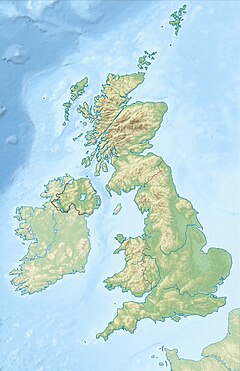 | |
| Alternative names | Great Forty-Foot telescope |
|---|---|
| Location(s) | Slough, Borough of Slough, Berkshire, South East England, England |
| Coordinates | 51°30′30″N 0°35′43″W / 51.5082°N 0.5954°W |
| Built | 1785–1789 |
| First light | 19 February 1787 |
| Decommissioned | 1840 |
| Telescope style | altazimuth mount reflecting telescope |
| Diameter | 1.2 m (3 ft 11 in) |
| Focal length | 12 m (39 ft 4 in) |
| | |
William Herschel's 40-foot telescope, also known as the Great Forty-Foot telescope, was a reflecting telescope constructed between 1785 and 1789 at Observatory House in Slough, England. It used a 48-inch (120 cm) diameter primary mirror with a 40-foot-long (12 m) focal length (hence its name "Forty-Foot"). It was the largest telescope in the world for 50 years. It may have been used to discover Enceladus and Mimas, the 6th and 7th moons of Saturn. It was dismantled in 1840 by Herschel's son John Herschel due to safety concerns; today the original mirror and a 10-foot (3.0 m) section of the tube remain.
